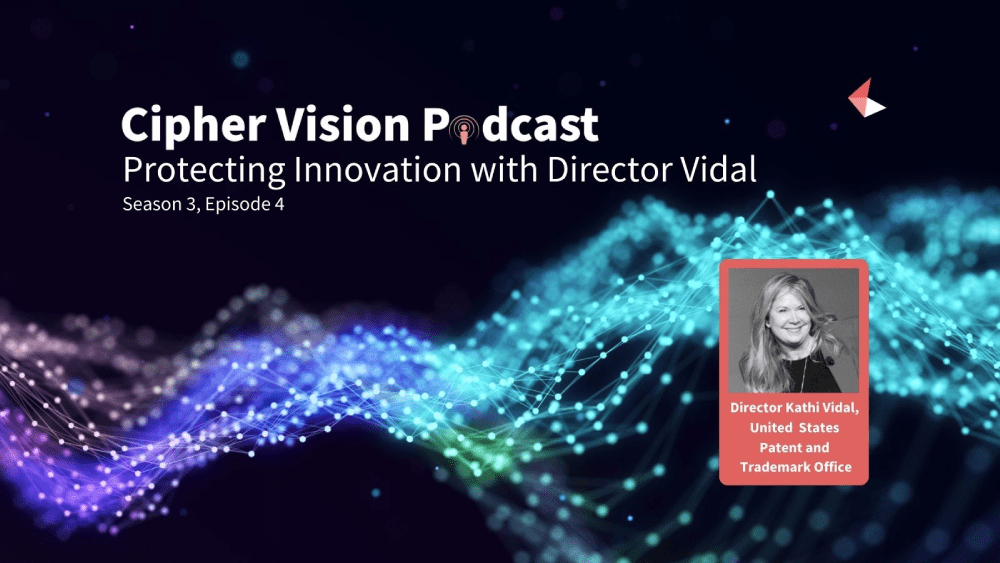Protecting Innovation with Director Vidal

Introduction
Episode 4 in Season 3 of the Cipher Vision Podcast series features Director Kathi Vidal, Director of the United States Patent and Trademark Office (USPTO) and Undersecretary of Commerce for Intellectual Property.
She joined us to share her thoughts on how we can improve the innovation ecosystem. Her ideas ranged from increasing inclusivity and adopting a collaborative approach, to taking full advantage of AI and data.
She chats to the hosts of the Cipher Vision podcast, who are:
- Francesca Levoir, Head of Marketing, LexisNexis Cipher
- Nigel Swycher, CEO, LexisNexis Cipher
If you would like to learn more about how Director Kathi Vidal has been bringing innovation to impact, read her Director’s blog at the USPTO site.
Conversation Highlights
Key priorities for change and improvement in the USPTO
I want to make sure that the USPTO runs as a best-in-class agency, as a best-in-class organization.
So, a lot of it is hearing from those who are on the ground, who are doing patent prosecution, trademark registration on a daily basis, to hear from them on how we could be doing better.
Just to give you an example, within our patent prosecution group, it turned out that our process for routing and classifying patents meant that patent examiners weren’t necessarily getting the patent that was most aligned with their background, and that it took work for them to then transition that to somebody else.
So, it was all the little things like that we were trying to solve for, to make sure that our work product was excellent, that our processes were excellent and that we were producing a great work product and creating a great atmosphere for everybody to work in.
How can we improve diversity in the innovators community?
That is something that we’re working on not just at the USPTO but across US Government.
So, if you follow the work that we do on our Council for Inclusive Innovation, I sit as a Vice Chair of NACIE, The National Advisory Council on Innovation and Entrepreneurship, that is a key tenet of all of that, we certainly want more innovation, we want to bring more innovation to impact which you can only really do through protecting your intellectual property.
And what I would say on the equity and inclusion part of it is, the only way all of our countries are going to be able to thrive is if we don’t leave anybody on the bench. So, I don’t see that as the end goal. If you think about Maslow’s pyramid of needs, it’s not the cherry on top, it’s not the top triangle, it is the base.
On what initiatives are increasing inclusivity
Last year, we trained 280,000 children in the country. We need to do much more.
So part of what we’re doing is where we have a programme that’s working like that, like our Teach The Teacher program, like the work in our universities, like our pro-bono programs, where we get out and meet people where they are, like our training programs, like our resource centers across the country.
We are working this year in 2023, to scale that work, to reach out to every single school in the country, to reach out to every state, to make sure that the great work that we’re doing is scaled and really ramped up. So, we get a lot more benefit from it.
And then beyond that, we’re working on creative programs. So, we just released a first time filer pilot program for patents, where if you’re new to the system, we’re going to help you get feedback more quickly, so you can get funding and you can bring your innovation to impact.
Right now, the percent of US women inventors on our patents is about 12 to 13%. Now, when we get out through our pro-bono programs, and meet people where they are, that jumps to 43%.
Does patent eligibility fuel the economy?
It’s the gatekeeper for it.
Because technology innovation, if you’re not able to protect that with intellectual property, it’s very difficult to get investment. It’s very difficult to bring your ideas to the marketplace.



